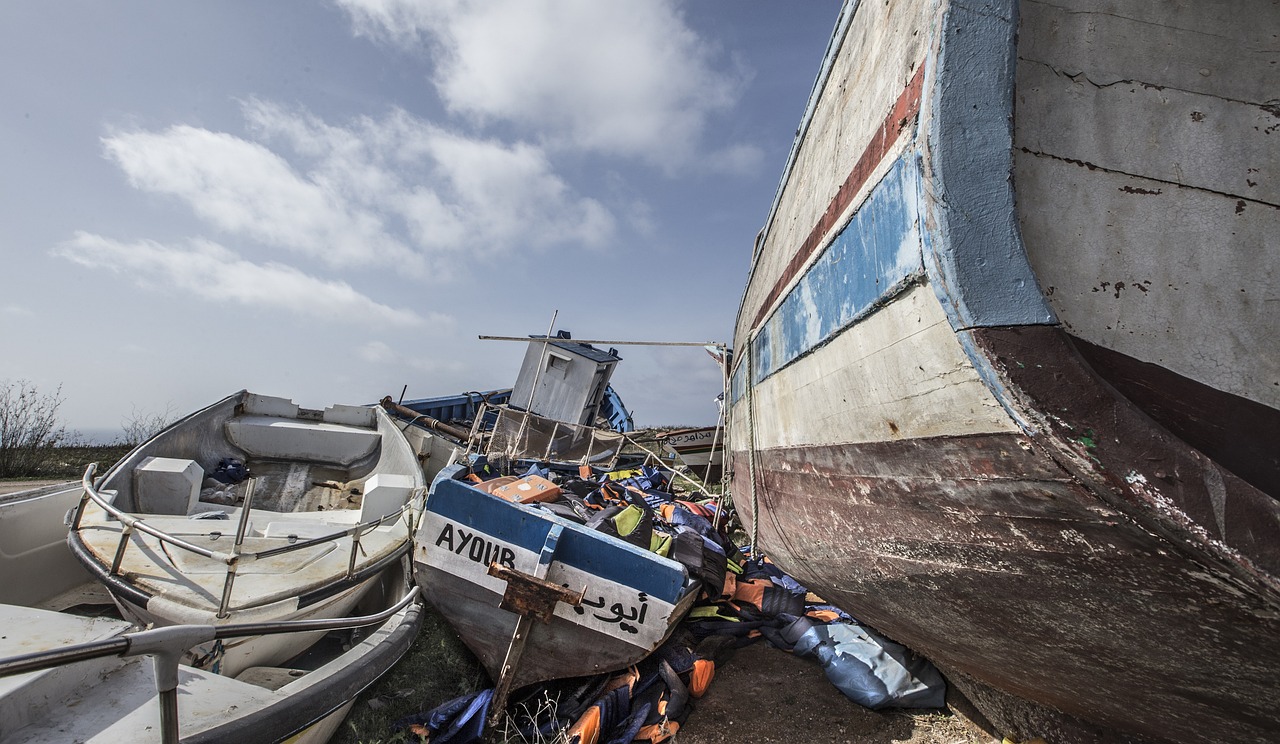The perilous journey from Africa to Europe, primarily by sea, has been a deadly route for thousands of migrants attempting to escape poverty, violence, and instability in their home countries. Since 2020, the number of migrants lost at sea or in the desert while attempting to cross the Mediterranean or Saharan routes has reached staggering numbers. Despite the dangers, many migrants continue to take the risk, driven by the hope of a better future in Europe.
Key Statistics: The Mediterranean and Saharan Migration Routes
1. The Mediterranean:
According to the International Organization for Migration (IOM) and UNHCR, the Mediterranean remains the deadliest migration route in the world. Between 2020 and 2024, thousands of people have perished in attempts to cross from North Africa to Europe.
- IOM Data (2020-2023):
- As of 2023, over 23,000 migrants are confirmed to have died or gone missing in the Mediterranean since 2014.
- In 2022 alone, 3,404 people lost their lives trying to cross, as reported by IOM’s Missing Migrants Project.
- 2023 figures also indicated a similarly high number, with hundreds of deaths, especially along the central Mediterranean route from Libya and Tunisia to Italy and Malta.
- The central Mediterranean route has long been one of the deadliest, with smuggler-operated boats often ill-equipped for the harsh conditions at sea.
- UNHCR Data:
- The UN Refugee Agency has reported that in 2021 and 2022, over 50% of the people who attempted to cross the Mediterranean were from Africa, particularly from Bangladesh, Syria, and sub-Saharan African countries.
- Libya continues to be the primary departure point, with migrants often enduring abuse and exploitation in detention centers before attempting their risky journey to Europe.
2. The Sahara Desert:
The desert routes from sub-Saharan Africa to the Mediterranean are equally perilous. Migrants from countries such as Eritrea, Somalia, Nigeria, Mali, and Sierra Leone risk being lost to starvation, disease, and the harsh desert climate.
- Saharan Crossings:
- Reports from IOM and Médecins Sans Frontières (MSF) highlight the dangers migrants face in crossing the Sahara. Migrants often travel in overcrowded trucks or on foot, suffering from heatstroke, dehydration, and violence from traffickers.
- According to IOM, between 2014 and 2020, more than 3,000 people died in the Sahara desert alone, although the actual number is likely higher due to unreported deaths.
- A 2020 study by the Mixed Migration Centre (MMC) estimated that 1 in 5 migrants attempting to cross the desert died or disappeared in the Sahara before even reaching the Libyan coast.
- Recent Figures (2020-2024):
- According to the United Nations Office on Drugs and Crime (UNODC), around 1,200 migrants die annually in the Sahara desert on their journey to the Mediterranean.
- Humanitarian organizations like MSF have called attention to the urgent need for protection and assistance for those crossing these desert routes, which have become increasingly controlled by criminal smuggling networks.
The Human Cost: Stories and Realities
The numbers reflect a harsh reality, but they only capture part of the story. Migrants who make it to Europe face not only the trauma of their perilous journey but also significant challenges once they arrive. Yet many continue to risk their lives because of the desperate conditions in their home countries, driven by poverty, armed conflicts, and a lack of opportunity.
- Human Trafficking and Smuggling Networks: Smuggling syndicates often take advantage of these vulnerable migrants, charging exorbitant amounts for the dangerous journey and exposing them to further abuse. Women and children are particularly vulnerable to sexual violence and exploitation during these treacherous crossings.
- Lack of Safe Alternatives: According to Amnesty International, European policies that close off safe and legal migration pathways have pushed migrants into the hands of smugglers. These policies, combined with the shutdown of rescue missions in the Mediterranean by European states, have further contributed to the loss of life.
Efforts and Challenges: What Needs to Be Done?
The international community, including the European Union, United Nations, and humanitarian organizations, has been working on multiple fronts to address both the immediate dangers of these journeys and the root causes of migration. However, challenges remain.
- Increased Rescue Operations: While humanitarian groups like SOS Méditerranée, Sea-Watch, and Doctors Without Borders (MSF) continue to conduct rescues in the Mediterranean, their efforts are often hindered by legal and political opposition from European governments. European states, including Italy and Malta, have been criticized for limiting rescue operations and criminalizing NGOs that attempt to save lives at sea.
- Improved Legal Pathways: Calls for safer and legal migration routes have gained traction. Human rights organizations emphasize the need to provide more resettlement opportunities and humanitarian visas for those fleeing conflict and disaster.
- Addressing Root Causes: To reduce the number of people resorting to deadly migration, there needs to be greater focus on tackling the root causes of forced migration, such as poverty, conflict, climate change, and human rights abuses. Investments in local economies, education, and stability in African countries could reduce the push factors behind migration.
- Increasing International Cooperation: The EU and African Union must collaborate more effectively to manage migration in a way that is humane, legal, and safe for all parties involved.
Conclusion
The death toll of migrants lost in the Mediterranean and the Sahara since 2020 is sobering, and despite some improvements in rescue operations, the situation remains dire. According to IOM, more than 30,000 migrants have died or gone missing attempting to cross the Mediterranean since 2014, with many others lost in the Sahara desert. These figures underscore the urgency of adopting a more compassionate and effective migration framework, one that addresses both the human cost of migration and the economic and social needs that drive people to undertake such risky journeys.
Ultimately, without safe and legal migration channels, stronger international cooperation, and a holistic approach to addressing the root causes of migration, the tragic loss of life will continue to rise.
References:
- International Organization for Migration (IOM), Missing Migrants Project. (2023). IOM Website
- United Nations Refugee Agency (UNHCR), Mediterranean Refugee Crisis. (2023). UNHCR Data
- Médecins Sans Frontières (MSF), Desert Migration and Its Dangers. (2020). MSF Reports
- Mixed Migration Centre (MMC), Desert Migration Report. (2020). Mixed Migration Centre
- Amnesty International, Migrant Rights and EU Policies. (2022). Amnesty Reports



